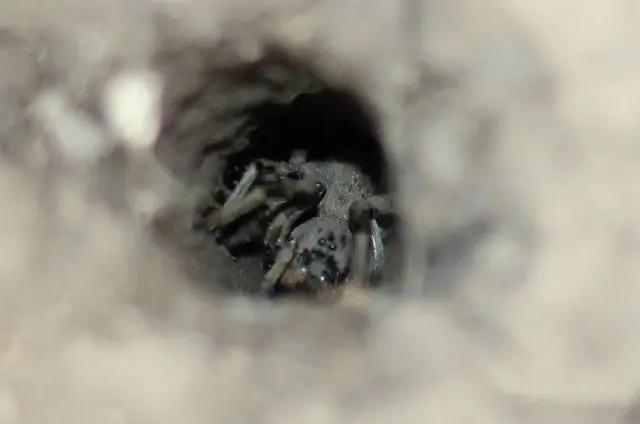In the steppe southern regions of Russia, on hot summer days, there is a high probability of meeting an inhabitant of these places with a tarantula.
Therefore, when going for a walk, it is useful to know how dangerous a tarantula spider is, how to behave when meeting this animal and what to do if a tarantula has bitten.

There are more than 200 varieties of tarantula, but the conversation will be about the South Russian tarantula, which lives mainly in the steppe zones of southern Russia.
The South Russian tarantula is a large poisonous spider with a body length of about 3 cm. The body of the spider is sandy-brown in color, covered with hairs that serve as the organ of touch for the animal. Despite the fact that the head of the tarantula is crowned with four pairs of eyes, the spider is rather short-sighted. The tarantula stalks its prey, hiding in a deep, up to half a meter deep, hole, inside a dense elastic web entwined. He orients himself during the hunt by the shadow cast by a probable victim on the walls of the mink. Thus, the tarantula can be easily tricked and lured out of the mink in order to see the spider in all its glory, for example, with the help of a sprig or spikelet. The female tarantula is somewhat larger than the males, but the easiest way to determine the sex of the individual in front of you is by the presence of a small cocoon of cobwebs, which the female tarantula wears on the back of the abdomen, holding the last pair of bristly legs. In this cocoon, eggs are first found, and later small tarantula cubs. A caring mother carries spiders on her body until the children are strong and ready to move.
Although the tarantula is a poisonous spider, it is not dangerous to humans. Tarantula venom causes swelling, redness, similar to a bee or wasp sting. The bite is very painful, but by no means fatal. In general, tarantulas do not attack animals or humans, unless they see the behavior as a direct threat to themselves. That is, you can accidentally sit on a spider and get a portion of the poison in return, but the spider will not attack first. Therefore, if you stumble upon a spider's burrow or see a tarantula hunting, just leave the animal alone and it will not cause you any harm.
When resting in nature, take precautions so as not to become an accidental victim of a tarantula bite:
- close the tent tightly, especially at night;
- shake up all bedding before going to bed, as well as clothes and shoes before using in the morning;
- do not tease the tarantula and do not allow children to do so;
- tarantulas are most active at night, so refrain from walking, gathering firewood, and other similar activities at this time of day.
What to do with a tarantula bite
If, despite all the precautions, the tarantula still bites, do not panic.
- First of all, take an antihistamine to rule out a possible allergic reaction to spider venom.
- Then wash the wound with clean water and soap, treat with some kind of disinfectant.
- If possible, apply cold to the site of the bite to relieve the swelling of the tissues around the wound.
- Lubricate the bite with anti-inflammatory ointment or any insect bite remedy.
- If for a long time the condition does not improve, and symptoms such as nausea, vomiting, dizziness, drowsiness, and also a major allergic reaction appear, seek qualified medical help.






